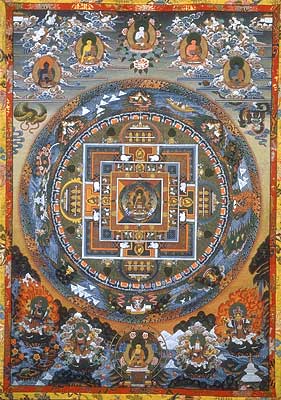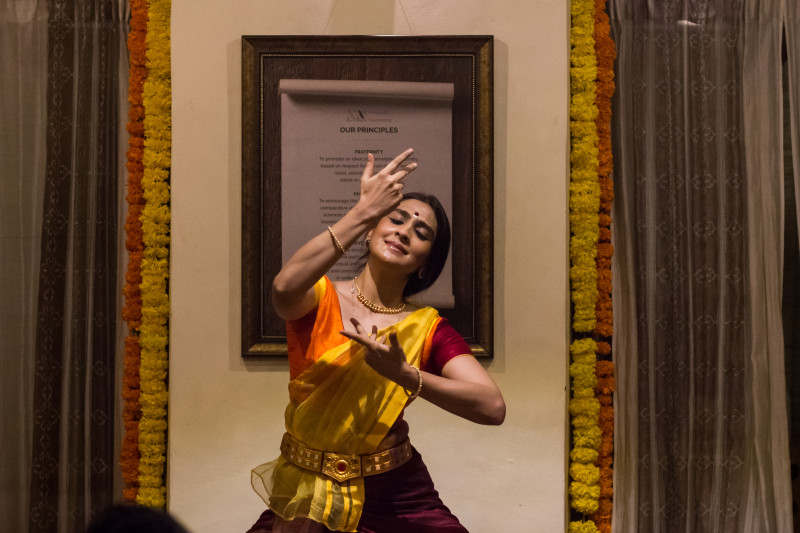The Dance of Life
Article By Trishya Screwvala
 Dance is a universal language that transcends geography and time; it is a means to express sentiments that cannot be captured in words. Although forms of dance differ across cultures, the aspiration of a true dancer always seems to remain the same – to assimilate and internalize principles of beauty, harmony and grace through movement and form, thereby escorting the audience to experience and discover these very same archetypes that lie latent within each individual. The pursuit of dance requires auditory, visual and kinesthetic abilities, demanding not only a mastery of the body, but also a sensitivity to aesthetics, spatial awareness, along with an intuitive ability to perceive rhythm. Perhaps it is this ability to seamlessly bring together various elements into a single artistic form that gives dance the unique characteristic of unifying opposites. In my experience as a trained ballet dancer and student of philosophy, I glimpsed the potential of dance to help reveal a fundamental principle of life – that harmony can only be achieved when we are able to find the point of unity between seemingly contrary principles.
Dance is a universal language that transcends geography and time; it is a means to express sentiments that cannot be captured in words. Although forms of dance differ across cultures, the aspiration of a true dancer always seems to remain the same – to assimilate and internalize principles of beauty, harmony and grace through movement and form, thereby escorting the audience to experience and discover these very same archetypes that lie latent within each individual. The pursuit of dance requires auditory, visual and kinesthetic abilities, demanding not only a mastery of the body, but also a sensitivity to aesthetics, spatial awareness, along with an intuitive ability to perceive rhythm. Perhaps it is this ability to seamlessly bring together various elements into a single artistic form that gives dance the unique characteristic of unifying opposites. In my experience as a trained ballet dancer and student of philosophy, I glimpsed the potential of dance to help reveal a fundamental principle of life – that harmony can only be achieved when we are able to find the point of unity between seemingly contrary principles.
From the dizzying pirouettes of a ballerina to the rapid footwork of the Bharatnatyam dancer, movement lies at the heart of all dance. And yet what is most striking is the sense of stillness and stability a dancer exudes, even in the midst of the most frenzied movement. Interestingly, what enables this agility is a strong centre. It is the powerful core muscles that allow the dancer to maintain balance and control in the quickest of routines. And it is the ability to lock eyes on a stable ‘centre’ while performing an endless sequence of swift turns, that gives direction and stability. So too in our daily life, our ability to keep our gaze centered, despite the external chaos, depends on our ability to find inner stillness; in the continuous dance of life, we must define our own rhythm rather than be taken over by the noise of our surroundings.
Furthermore, a dancer will never stand still, for even the resting posture of all dance forms contains subtle but distinct movement – whether an upward pull of the spine, a lengthening of the neck, a dynamic turn out of the legs – a sense of life and energy is ever present. Since life is always in movement, to aspire to live in accordance with the principles of life, means that the constant need we feel to take a break from this movement, our longing to momentarily hit the “pause” button, is in a way, to stagnate and resist the natural rhythm of life.
The strength and musculature of a dancer’s body are often celebrated as fundamental to the dexterity and nimbleness of the dancer. It is what allows for the soaring leaps, or conversely, performing in the squatted stance with the body held close to the ground. Yet without flexibility, strength by itself can be detrimental for a dancer. True strength, far from being a rigid and immovable force, perhaps is like water; which can cut through the hardest of substances, and through its fluidity and adaptability is able to surmount any obstacle in its path. It is this very combination of inner strength coupled with an outer softness that a dancer expresses. Looking at our own lives, often our tendency might be to express these qualities in an inverse order. We might conceal and protect our inner softness, our insecurities or lack of confidence, with an external façade of aggression and hard heartedness, instead of developing a strong and stable centre, which can allow for more flexibility and adaptability in confronting the challenges that life presents us.
Discipline is another key principle synonymous with dance. In fact, the insistence on accuracy, repetition and the strict adherence to discipline that especially the classical arts demand, is often a deterrent to aspiring dancers. Yet it is this very discipline and relentless repetition that enables an artist to master the basics, overcome their own physical and mental limitations, in order to reveal their true potential. A dancer’s aching muscles or bleeding toes then become irrelevant, for it is only through this perseverance that they are able to unite with something beyond their own selves. In our daily lives too, perhaps the secret to freeing ourselves from our own limitations and boundaries lies in the value of discipline, if only we persevere to develop it, rather than avoid it.
Mere mastery of technique is not enough to move an audience. The power of dance comes from the ability of the dancer to encounter archetypes far greater than themselves, and become a conduit to share it with the spectator. As an aspiring philosopher I recognise that the performing arts therefore, are not intended to show off physical prowess, but to allow the audience to become part of the harmony of life. In Indian dance forms for example, the dancer strives to become the God, Goddess, or Archetype in the moment of performance, and through this, the audience is invited to touch a divine aspect within themselves. The dancer must therefore simultaneously perceive and share, without differentiating between the two. In nature, we see that every living being simultaneously receives and gives by fulfilling its role. Similarly, we can draw inspiration in our own lives to recognise that giving and receiving, far from being opposites, actually lie on one continuous spectrum.
Dance then, can allow both performer and spectator to momentarily encounter the true nature of reality – the One Life beneath the numerous contradictions on the surface, and the stillness at the centre of continuous movement. If we strive every day, to touch the unity at the heart of the seeming multiplicity of life, each of us can become dancers attuned to the rhythm of life.
Image Credits: By Loadmaster (David R. Tribble) | Wikimedia Commons | CC BY-SA 3.0
The entity posting this article assumes the responsibility that images used in this article have the requisite permissionsImage References
commons.wikimedia.org/wiki/File:Ballet-Ballerina-1843.jpg
Permissions required for the publishing of this article have been obtained




What do you think?